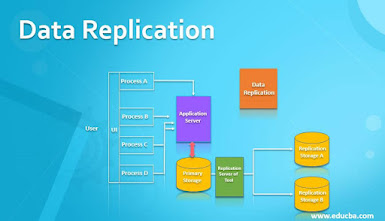Streamlining Data Management and Ensuring Reliability
In the digital age, data is the lifeblood
of organizations, driving decision-making, operational efficiency, and
innovation. However, as data volumes continue to surge, ensuring its
availability, integrity, and accessibility across various systems and locations
becomes increasingly challenging. This is where replicating software emerges as
a game-changer. In this article, we'll delve into the transformative world of
replicating software, exploring its significance, benefits, and how it's
reshaping data management.
The Significance of Replicating Software
Replicating software, also known as data
replication software, plays a pivotal role in modern data management for
several compelling reasons:
Data Availability: Replicating software
ensures that data is continuously copied and available across multiple systems,
minimizing downtime and ensuring uninterrupted access to critical information.
Data Integrity: By maintaining consistent
copies of data across various locations, replicating software helps safeguard
data from corruption, loss, or tampering.
Disaster Recovery: Replicating data to
remote locations or cloud environments facilitates efficient disaster recovery,
ensuring that organizations can quickly resume operations even in the face of
catastrophic events.
Load Balancing: Replication can distribute
data across multiple servers or nodes, improving system performance and
ensuring that applications have access to the data they need.
Types of Replicating Software
Replicating software comes in various
forms, each designed to cater to specific data management needs:
Database Replication: This type of
replicating software focuses on copying data between different database
systems. It's commonly used for ensuring high availability, disaster recovery,
and data distribution.
File Replication: File replication software
is designed to replicate files and directories across multiple servers or
storage devices. It's valuable for maintaining data consistency and
availability.
Real-Time Replication: Real-time
replication software ensures that data is copied immediately as changes occur,
providing the highest level of data consistency but may introduce latency.
Batch Replication: Batch replication
software captures and replicates data at scheduled intervals, reducing the
strain on network resources but potentially resulting in slightly delayed data
updates.
Snapshot Replication: Snapshot replication
creates point-in-time copies of data and replicates them to secondary systems.
It offers flexibility in terms of recovery points and can be more efficient in
terms of data transfer.
Benefits of Replicating Software
The adoption of replicating software offers
organizations a multitude of advantages, enhancing data management and
protection:
Data Redundancy: Replicating software
creates redundant copies of data, reducing the risk of data loss due to
hardware failures, data corruption, or disasters.
Business Continuity: With replicated data
in remote locations, organizations can execute faster and more effective
disaster recovery plans, minimizing downtime and data loss.
Scalability: As data volumes grow,
replicating software can scale to accommodate increased storage and performance
demands.
Data Migration: Replicating software
simplifies data migration between systems, databases, or cloud environments,
reducing downtime and complexity.
Load Balancing: By distributing data across
multiple servers or nodes, replicating software can improve system performance
and application responsiveness.
Choosing the Right Replicating Software
Selecting the most suitable replicating
software for your organization hinges on several factors, including your
specific needs, budget, and existing infrastructure. Here are some
considerations:
Data Volume and Velocity: Assess the volume
of data you need to replicate and the speed at which it changes. This will
impact the choice between real-time and batch replication.
Budget Constraints: Consider your budget
for implementing replicating software, including software licensing, hardware
requirements, and ongoing maintenance costs.
Compliance and Security: Ensure that your
chosen replicating software complies with relevant data privacy and security
regulations, especially if you deal with sensitive or regulated data.
Scalability: Choose replicating software
that can scale with your organization's growth and evolving data management
needs.
Replicating software has emerged as a linchpin of modern data management, offering organizations the means to ensure data availability, integrity, and accessibility in an increasingly data-driven world. By understanding the types of replicating software available and carefully assessing your organization's needs, you can select the right solution to meet your data management and protection requirements, ensuring that your data remains secure, reliable, and readily available across diverse systems and locations.




Comments
Post a Comment